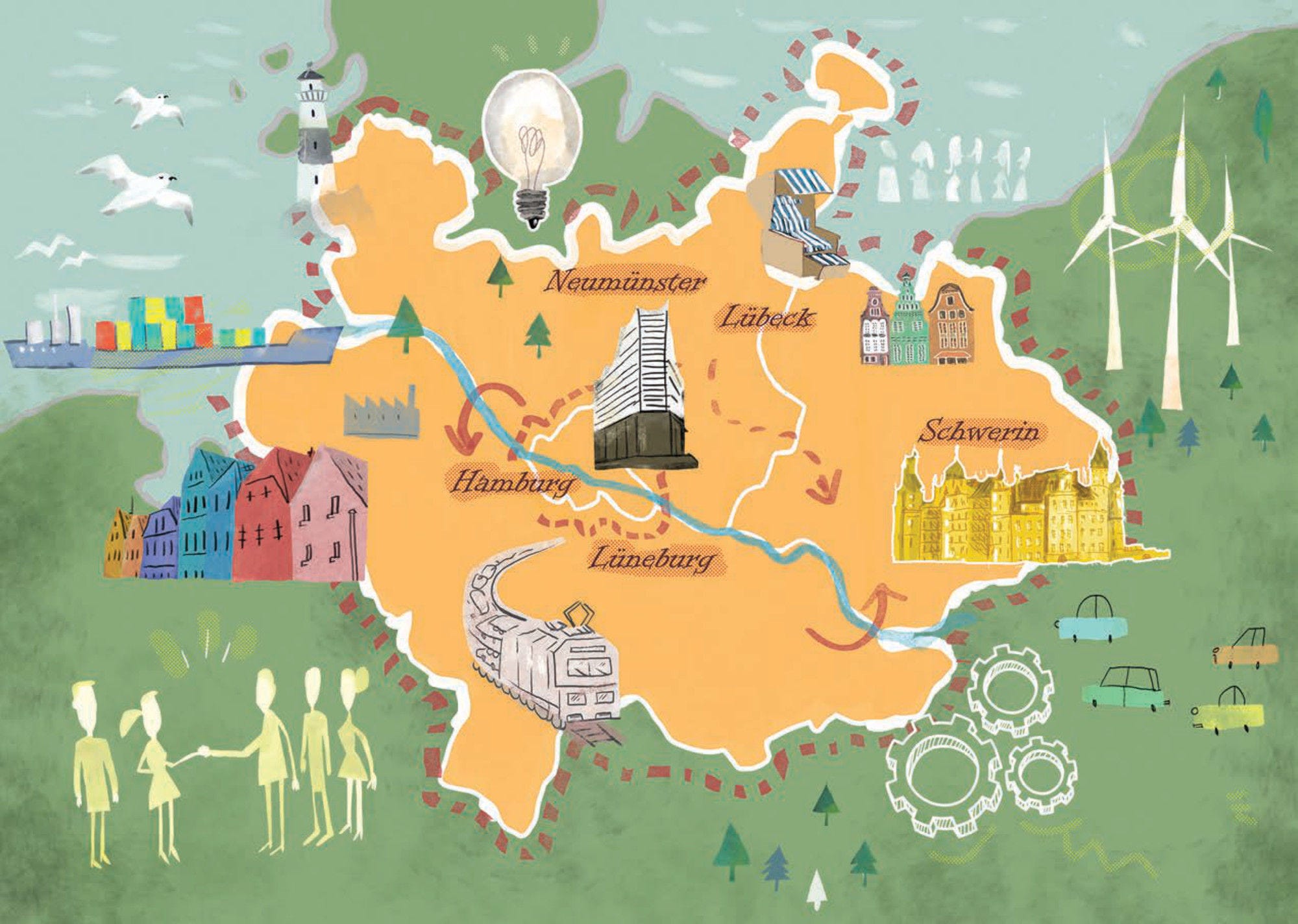Hidalgo is one of the smallest states in Mexico. It benefits from its close proximity to Mexico City and contains a number of economic and environmental assets in its territory. After a long period of economic stagnation, the state is now closing up the gap with national standards. Yet, productivity and income levels remain low with respect to national levels, and there exist high socio-economic disparities between the south of the state and the municipalities in the northern and mountainous area. This review looks at how the state of Hidalgo is seeking to boost its economy, particularly through a series of institutional reforms and policies to improve the business environment. It highlights opportunities to accelerate the economic convergence and transit towards high-value added economic sectors. The review also identifies a number of recommendations to promote inclusive growth and reduce its north-south divide and offers suggestions to address governance challenges in the territory.
OECD Territorial Reviews: Hidalgo, Mexico

Abstract
Executive Summary
Hidalgo must better mobilise its assets and overcome some important bottlenecks to accelerate economic growth and fulfil its growth potential
The state of Hidalgo has long experienced economic stagnation, yet since the aftermath of the global financial crisis, its economy has performed better than the average of Mexican states. During the 2009-16 period, the growth of the per capita gross domestic product (GDP) in Hidalgo (3.7%) exceeded the country average (2.1%). Its productivity growth (3%) was the sixth highest in the country over the 2010-15 period. Foreign direct investment (FDI) also appears to be surging over the last years, with a relatively greater diversity in foreign sources than at the national level.
Hidalgo has a strong growth potential given its strategic location – just north of the state of Mexico and in close proximity to Mexico City –, its rapid urbanisation and a higher share of manufacturing activities (20.6% of gross value-added [GVA]) than the national average (16.1%). The state also benefits from a youth demographic premium with a much higher share of the population that is youth (28.0%) than the average of OECD TL2 regions (17.9%).
Despite the recent trend of convergence to the Mexico average, a big challenge for the state is to accelerate this process and raise its income and productivity growth. Hidalgo’s productivity level is at 40% of the median of OECD regions and ranks as the 12th lowest among Mexican states and in the bottom 5% across OECD regions (2014). To address this challenge, Hidalgo needs to overcome some important bottlenecks. These include improving the performance of cities to help increase well-being and service sector productivity, making the most of tradable activities by linking FDI projects with the local economy and updating and developing territorial and ecological plans to improve the business environment. Moreover, reducing the share of informality (73.8%, the fourth largest in the country) and improving the skills of its labour force are pressing challenges for the state.
Sustained growth over the medium term will require improvements in the enabling factors to raise income standards and well-being, notably the state’s level of human capital and capacity to innovate
Hidalgo has a number of competitive advantages, beyond its strategic location. It is one of the safest states in Mexico (the third lowest homicide rate in the country) and has a relatively good environmental quality and low logistical costs. The current government is aiming to make Hidalgo more dynamic and attractive by improving its current business environment and modernising the public sector.
Nevertheless, to realise its potential, Hidalgo must address a number of enabling factors to increase productivity over the medium term, notably skills, accessibility and its capacity to innovate. Hidalgo lacks a holistic innovation policy, which reduces its capacity to link academia, the government and the private sector. In turn, Hidalgo’s innovation performance has declined over time (from 0.8 patents per million inhabitants in 2002 to 0.5 in 2015), in contrast with the average pattern of increasing patenting across Mexican states
Likewise, while the state of Hidalgo performs better in basic education than the national average (according to national evaluation scores), the quality of higher education is low by international standards (94th lowest amongst 133 regions according to OECD Programme for International Student Assessment [PISA] scores in mathematics). There also exists a mismatch between industry needs and the state’s tertiary education institutions, with an over-representation of social sciences and an under-representation of computer science. Moreover, Internet connectivity and accessibility are major challenges to boost competitiveness in the state. Most of Hidalgo’s households (67%) lack an Internet connection and nearly two‑thirds of its road network is unpaved (62%), above the national average (53%).
To make growth in Hidalgo more inclusive, an integrated territorial approach is required to overcome its north-south divide and spread the benefits to all people throughout the state
There are important urban-rural divides within the state. Its three metropolitan areas, home to 36% of this population, concentrate almost half of economic establishments (48%) and a large proportion of total employment (42%) in the state. Yet, a large share of Hidalgo’s population still lives in rural areas (46%). According to the 2016 OECD Regional Well‑Being Framework, Hidalgo ranks below the average of Mexican states in life satisfaction, housing, access to services and income indicators, and its poverty rate (50.6%) is the ninth highest in the country. Rural areas have higher poverty rates, a larger share of labour informality and a higher concentration of primary activities. Extreme poverty in non-metropolitan areas reaches 13% of the population, far above the 3% in metropolitan areas (2015).
Low-density areas also face big challenges in their capacity to deliver public services. Young people in some localities in northern regions cannot access any school within a one‑hour drive, while in southern localities, they can access up to 148 secondary schools within the same timeframe. About two in ten people in Hidalgo do not have access to a hospital within a one-hour drive.
There is hence a need to develop an integrated territorial approach with a long-term strategy for business development in rural areas and better-quality services that can lead to higher levels of well-being. For this, public spending of the state and its municipalities need to be better linked with investment projects and aligned with the development plan. Some remote municipalities have better accessibility to neighbouring states than to the south of Hidalgo. The state could hence benefit from better co‑ordination with neighbouring states to improve the provision of public services and infrastructure. Effective co‑ordination with the federal government will also be important to unleash the economic potential of the state. Given the uneven distribution of Hidalgo’s economic activity, the economic plan should emphasise a place-based approach in order to reduce the current territorial divide.
Key recommendations
Reduce informality, improve skills, link local business with FDI projects and enhance the performance of cities to accelerate economic convergence
Strategies to support this recommendation should:
Include the reduction of informality as a priority objective in the State Development Plan, focusing on the reforms that can be taken at the state level. It includes reducing labour informality in the public sector at the state and municipal level and promoting better co‑ordination with municipal and federal governments.
Develop programmes of vocational training, language and information technology (IT) training for the working age population to improve their employability.
Improve the performance of cities to raise the quality of life and productivity. For this, the creation of a Metropolitan Planning Institute and the improvement of co‑ordination in urban governance are instrumental.
Improve the links of SMEs with new FDI investments and global value chains by creating a more strategic vision to integrate local programmes with funding and leveraging on the National Entrepreneur Fund.
Update and develop territorial and ecological plans to improve the business environment and attain sustainable growth.
Improve the enabling factors to boost productivity and achieve sustained growth in the medium and long term
Strategies to support this recommendation should:
Establish a co‑ordinated innovation policy that goes beyond science and technology, and links government and academia to business needs.
Create a co‑ordinated mechanism to support SMEs by better aligning federal programmes on SMEs with those at the state level.
Improve the accessibility to public services and the infrastructure connectivity with internal and external markets through the use of technology and co‑operation with neighbouring states municipalities and the federal government.
Develop an integrated territorial approach with a stronger public governance and a more efficient fiscal collection and public investment to reinforce efforts for inclusive growth
Strategies to support this recommendation should:
Improve the State Development Plan and its implementation by aligning budget allocations with objectives and promoting shared responsibilities among state secretaries. It should prioritise objectives and improve the monitoring mechanism. In rural areas, it should promote the modernisation of agriculture and off-farm activities.
Improve the collection of own financial resources and the efficiency of public investment and transfers, for both the state government and municipalities.
Strengthen governance and co‑ordination mechanisms between levels of government and promote inter-state collaboration to attain joint projects on infrastructure or public service delivery with neighbouring states (e.g. Mexico or Veracruz).
In the same series
Related publications
-
 21 November 2024
21 November 2024 -
 Policy paper19 November 2024
Policy paper19 November 2024











